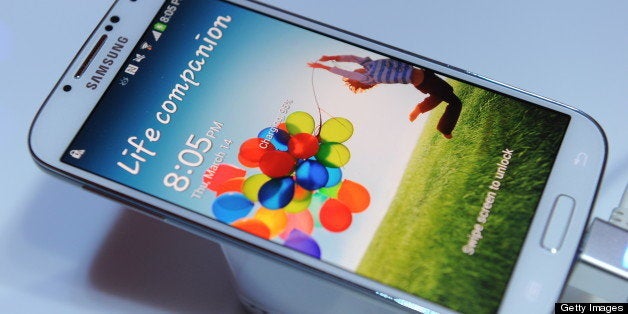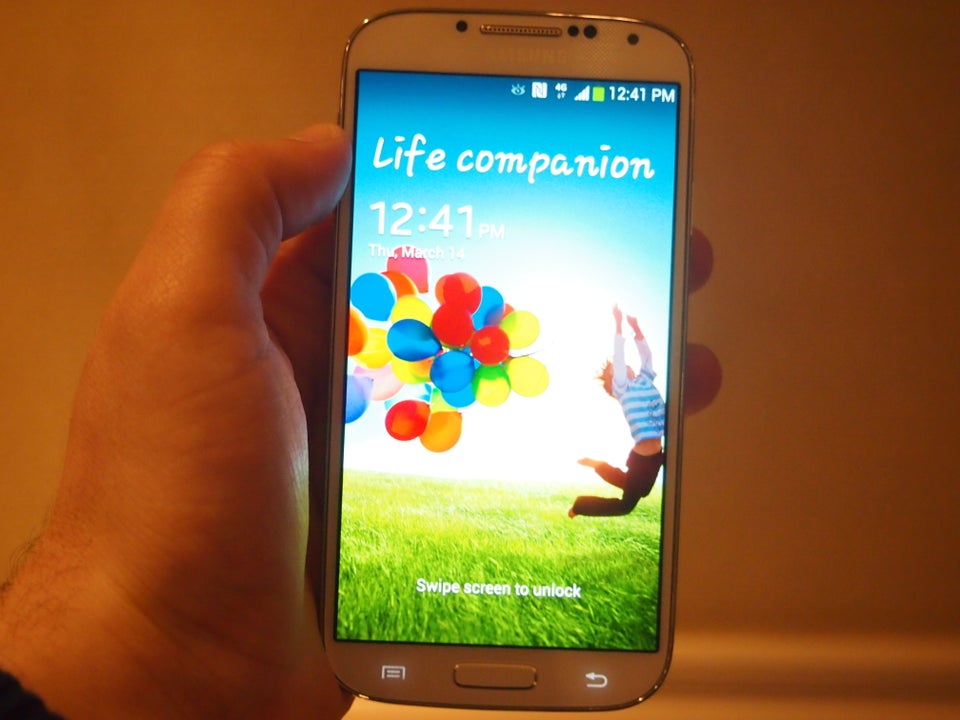
Samsung is aiming to free your fingers with the much-hyped release of the Galaxy S4.
Like all new smartphones, the Galaxy S4 packs new and improved features. But the one that stands out is an infrared sensor that allows you to answer calls, control the screen and read long text without ever touching the display.
Attempting to change the way we interact with our smartphones is a bold and ambitious move from Samsung. We've spent nearly six years -- to paraphrase the words of the late Steve Jobs -- using the styluses we were born with to answer calls, take pictures and scroll through text and images.
But according to Pai-Ling Yin, an assistant professor at the MIT Sloan School of Management, the movement toward a more seamless interaction with technology is the natural progression of innovation.
"I would say people are desperate to interact with their phones in a new way," said Yin, part of the Mobile Innovation Group at Sloan. "If you could imagine what would be the easiest way for humans to interact with technology, it would be to use natural human movements."
Samsung is betting that natural movements -- like swipes, waves, and head nods -- will be the next great innovation in smartphones.
A simple swipe over to the Galaxy S4's screen brings the locked phone to life, showing the time, date, missed calls, messages and remaining battery life without you touching it. Swiping from left to right allows a user to scroll between pictures, songs or Web pages, and moving a hand up or down scrolls through text. Videos pause when a user looks away from the screen.
If your phone rings while driving, a quick wave of the hand will answer the call and automatically set it to speakerphone.
Air View, also available (albeit with a stylus) on the Galaxy Note II, Note 10.1 and Note 8.0 devices, allows the user to preview an email, message or photo by hovering a finger over the content.
The most striking feature may be Smart Scroll, an updated version of Smart Stay, the technology on the Samsung Galaxy S III and Note II that kept the screen from dimming or turning off while a user looked at it.
Smart Scroll uses a camera to detect a user's eyes, allowing her to scroll through Web pages and email with a simple tilt of the head or device.
So are we about to retire our thumbs and see buses and subway cars full of commuters nodding their heads up and down as they stare at their smartphones?
Not quite. Learning these new features takes some time, and they're far from perfect. An initial setup screen is a helpful guide to the phone's new features, but even after spending a good bit of time reading on the phone, I still hadn't mastered Smart Scroll. The text would sometimes move too quickly and I'd lose my place in the material.
Scrolling through a large number of photos is also imperfect. It's slower than using your thumb, and if you don't move far enough away from the sensor at the top of the phone, the phone will think you're scrolling the other way and you'll end up with the previous photo.
And for now, most of these features are only available in a handful of apps; Smart Scroll, for example, works in the default browser, but not in Chrome.
But Yin said Samsung shouldn't be concerned if users don't flock to the new features right away.
"Adoption, as with many new technologies, tends to be slow at first and then speed up," Yin said. "Early adopters who are more favorable to Samsung will help them work out the kinks."
Samsung is one of a growing number of companies developing technology that aims to liberate us from using our hands to operate our devices.
Sergey Brin, the co-founder of Google, infamously called "rubbing a featureless piece of glass" on a smartphone "emasculating." Glass, the wearable technology from Google that will be released next year, aims to free people from their smartphones by providing a heads-up display and camera mounted on glasses.
In March, The Verge reported that LG and Samsung are engaged in a patent battle over the technology used in Smart Pause.
Even Facebook Home, the new "apperating system" that Facebook released two weeks ago, aims to make the tasks of Liking, commenting and sharing easier.
Samsung is making gains into Apple's consistent lead in the U.S. smartphone market. In August, before the iPhone 5 came out, Samsung handsets outsold the iPhone for the first time ever.
According to Comscore, Apple still controls nearly 39 percent of the American smartphone market, and Samsung trails with a 21.3 percent share. But if there was ever a time for Samsung to continue to bite into Apple, it would be now. In an earnings call on Tuesday, Tim Cook, Apple's CEO, suggested that the company does not plan to release a new product until the fall.
The Galaxy S4 goes on sale this week and will be available on AT&T, Verizon, Sprint and T-Mobile and as well as on Cricket, C Spire and U.S. Cellular, according to the Associated Press. Prices will range from $150 to $250, depending on the contract.
Samsung has already succeed in introducing innovative technology that takes us beyond how we interact with our devices today. But it remains to be seen whether the technology will see widespread adoption.
